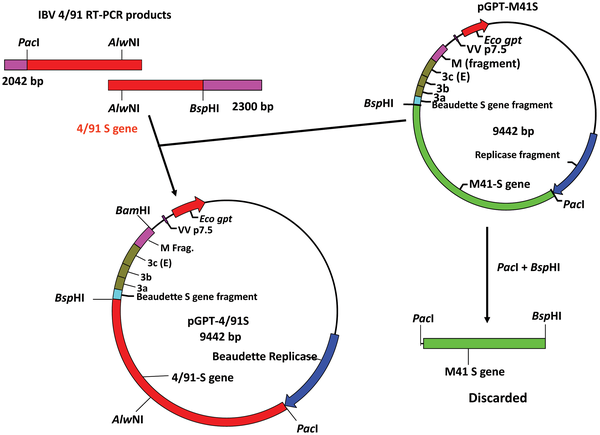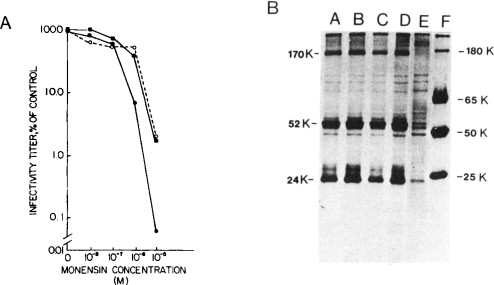Abstract
A recombinant infectious bronchitis virus (IBV), BeauR-M41(S), was generated using our reverse genetics system (R. Casais, V. Thiel, SG Siddell, D. Cavanagh and P. Britton, J. Virol. 75: 12359-12369, 2001), in which the ectodomain region of the IBV M41-CK spike gene replaced the corresponding region of the IBV Beaudette genome. Breau-M41(S) acquired the same cell tropism phenotype as IBV M41-CK in four different cell types, demonstrating that the IBV spike glycoprotein is a determinant of cell tropism.
Avian infectious bronchitis virus (IBV) recombinant, a member of the Coronaviridae (order Nidovirales, genus Coronavirus), is a highly infectious pathogen of domestic birds that replicates mainly in the respiratory tract but also in the epithelial cells of the intestine, kidney and intestine. oviduct. Genetically very similar coronaviruses cause disease in turkeys and pheasants. Coronaviruses are enveloped viruses that replicate in the cell cytoplasm and contain a 27–32 kb, single-stranded, non-segmented, positive-sense RNA genome.

All coronavirus lipid envelopes contain at least three membrane proteins: the spike glycoprotein (S), the integral membrane protein (M), and the small membrane protein (E). The coronavirus protein S is a type I glycoprotein that oligomerizes in the endoplasmic reticulum and assembles into virion membranes through noncovalent interactions with the membrane protein. After incorporation into coronavirus particles, glycoprotein S is responsible for binding to the target cell receptor and fusing the viral and cell membranes.
Glycoprotein S consists of four domains: a signal sequence that is cleaved during synthesis; the ectodomain, which is present on the outside of the virion particle; the transmembrane region responsible for anchoring the S protein in the lipid bilayer of the virion particle; and the cytoplasmic tail. IBV glycoprotein S (1162 amino acids) is divided into two subunits, S1 (535 amino acids; 90 kDa), which comprises the N-terminal half of the S protein, and S2 (627 amino acids; 84 kDa), which comprises the C -terminal half of the S protein.
The S2 subunit associates noncovalently with the S1 subunit and contains the C-terminal and transmembrane cytoplasmic tail domains. The S1 subunit contains the receptor-binding activity of the S protein. The ectodomain region of the S2 subunit contains a fusion peptide-like region and two heptad repeat regions involved in S-protein oligomerization. The shorter heptad repeat is adjacent to the transmembrane region and consists of a leucine zipper motif. Modification of the leucine zipper motif of murine hepatitis coronavirus (MHV) protein S affected oligomerization and loss of cell-to-cell fusion.

Directed recombination has been used to modify the MHV S gene. Similarly, a recombinant porcine coronavirus transmissible gastroenteritis virus (TGEV) containing the S gene derived from an enteric TGEV within a respiratory TGEV genome was isolated in vivo and shown to have acquired enteric tropism. In addition, the MHV glycoprotein S ectodomain was replaced with the corresponding sequence from feline coronavirus infectious peritonitis virus, and the resulting virus acquired the ability to infect feline cells with concomitant loss of the ability to infect murine cells in the culture of tissues. These results demonstrated that the S-glycoprotein for a group 2 coronavirus (MHV) or a group 1 coronavirus (TGEV) was involved in the tropism of these coronaviruses.
However, due to the lack of a suitable modification system, the role of glycoprotein S of IBV, a group 3 coronavirus, in cell tropism had not yet been confirmed. We have used our IBV reverse genetics system to investigate the role of IBV glycoprotein S in cell tropism, demonstrating, for the first time, that the IBV reverse genetics system could be used to generate a recombinant coronavirus with a modified genome. precision to study the role of a coronavirus gene. Recombinant IBV (EBV) analysis showed that S-gene swapping resulted in a virus that had the growth characteristics of the S-gene donor strain, M41-CK, confirming that the S-glycoprotein of a group 3 coronavirus (IBV) is a determinant of the cellular tropism of the virus in vitro.
